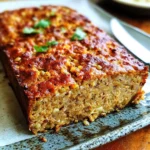These little veggie frittata cups have become an absolute staple in our household. Mornings can be hectic, especially with school runs and work deadlines looming, and finding time for a nutritious breakfast often feels like a luxury. That’s where these portable powerhouses come in! I stumbled upon a similar recipe online a while back, tweaked it to suit our family’s tastes (and to sneak in even more veggies!), and now they’re a weekly fixture. My kids, who can be notoriously picky eaters, actually cheer when they see a batch of these in the fridge. They’re not only delicious – packed with flavor and satisfyingly cheesy – but also incredibly convenient. Grab-and-go breakfasts, healthy snacks, even light lunches – these frittata cups do it all. Honestly, they’ve been a game-changer for our mornings, and I’m so excited to share this recipe with you so they can become a game-changer for yours too! Prepare to fall in love with a breakfast that’s both good for you and gloriously easy to make.
Ingredients
- 6 large eggs: The foundation of our frittata cups, providing protein and binding all the ingredients together. Choose high-quality, fresh eggs for the best flavor and texture.
- 1/4 cup milk (dairy or non-dairy): Adds moisture and creaminess to the frittata. You can use whole milk for a richer flavor, or opt for skim milk, almond milk, oat milk, or soy milk for a lighter or dairy-free version.
- 1/2 cup shredded cheese (cheddar, mozzarella, or your favorite): Cheese brings flavor, melty goodness, and a satisfying richness to the frittata cups. Cheddar adds a sharp, classic taste, while mozzarella offers a milder, meltier texture. Experiment with different cheeses like Monterey Jack, Gruyere, or even a sprinkle of Parmesan for varied flavor profiles. Pre-shredded cheese is convenient, but freshly grated cheese melts more smoothly and often has better flavor.
- 1 cup mixed vegetables, diced (bell peppers, onions, spinach, zucchini, mushrooms, tomatoes): This is where the “veggie” in veggie frittata really shines! Use a colorful mix of your favorite vegetables. Bell peppers (red, yellow, orange, green) add sweetness and crunch. Onions (yellow, white, red) provide a savory base. Spinach wilts down beautifully and packs in nutrients. Zucchini adds a mild, slightly sweet flavor and moisture. Mushrooms offer an earthy umami taste and meaty texture. Cherry tomatoes or diced tomatoes add a burst of juicy sweetness. Feel free to get creative with your vegetable combinations – broccoli florets, asparagus tips, corn kernels, or even finely diced carrots can be delicious additions. Using a pre-cut frozen vegetable mix can save time, just ensure to thaw and drain excess moisture before using.
- 1 tablespoon olive oil: Used for sautéing the vegetables, olive oil adds healthy fats and enhances the flavor of the vegetables as they cook. You can substitute with other healthy oils like avocado oil or coconut oil. Sautéing the vegetables before adding them to the egg mixture helps to soften them, release their flavors, and prevent them from making the frittata cups watery.
- 1/2 teaspoon salt: Enhances the flavors of all the ingredients and seasons the frittata perfectly. Adjust the amount of salt to your taste preference. Kosher salt or sea salt are great options.
- 1/4 teaspoon black pepper: Adds a touch of spice and depth of flavor to the frittata. Freshly ground black pepper is always recommended for the best flavor.
- Optional: 1/4 teaspoon garlic powder or onion powder: For an extra layer of savory flavor, garlic powder or onion powder can be added to the egg mixture. These spices complement the vegetables and cheese beautifully.
- Optional: Fresh herbs, chopped (parsley, chives, basil): Fresh herbs add a bright, aromatic touch to the frittata cups. Parsley provides a fresh, clean flavor. Chives offer a mild oniony taste. Basil brings a slightly sweet, peppery note. Sprinkle chopped herbs over the frittata cups before baking or after they come out of the oven for a burst of freshness.
Instructions
- Preheat your oven to 375°F (190°C). Starting with a preheated oven ensures even cooking and helps the frittata cups puff up nicely. Make sure your oven is at the correct temperature before you place the frittata cups inside. An oven thermometer can be helpful to ensure accurate temperature readings.
- Prepare your muffin tin. Lightly grease a standard 12-cup muffin tin with cooking spray or olive oil. Alternatively, you can use silicone muffin liners for easy removal and cleanup. Greasing or lining the muffin tin is crucial to prevent the frittata cups from sticking and ensures they release easily once baked. If using paper liners, be aware that they might stick slightly to the frittata.
- Sauté the vegetables. Heat olive oil in a skillet over medium heat. Add your diced vegetables (onions, bell peppers, mushrooms, zucchini, etc.) to the skillet. Sauté for 5-7 minutes, or until the vegetables are softened and slightly tender. Cooking the vegetables beforehand is important for several reasons: it softens them, making them more pleasant to eat in the frittata cups; it releases their flavors, enhancing the overall taste of the frittata; and it removes excess moisture from the vegetables, preventing the frittata cups from becoming watery. Stir the vegetables occasionally to ensure even cooking and prevent burning. If using spinach, add it in the last minute or two of sautéing, as it wilts down quickly.
- Let the vegetables cool slightly. Once the vegetables are sautéed, remove the skillet from the heat and let them cool for a few minutes. This step is important because adding hot vegetables directly to the egg mixture can start to cook the eggs prematurely, resulting in a less smooth and even texture. Allowing the vegetables to cool slightly prevents this from happening.
- Whisk the eggs and milk. In a large bowl, whisk together the eggs, milk (dairy or non-dairy), salt, pepper, and optional garlic powder or onion powder. Whisk until the eggs and milk are well combined and slightly frothy. Whisking incorporates air into the egg mixture, which helps the frittata cups become light and fluffy. Ensure that the salt and pepper are evenly distributed throughout the mixture for consistent seasoning.
- Add cheese and sautéed vegetables to the egg mixture. Stir in the shredded cheese and the slightly cooled sautéed vegetables into the egg mixture. Gently fold the ingredients together until they are evenly distributed. Avoid overmixing, as this can make the frittata cups tough. Ensure that the vegetables and cheese are well incorporated throughout the egg mixture so that each frittata cup contains a good balance of ingredients.
- Pour the mixture into the prepared muffin tin. Divide the egg mixture evenly among the 12 muffin cups, filling each cup about three-quarters full. Do not overfill the muffin cups, as the frittata cups will puff up during baking and could overflow. Use a spoon or ladle to ensure even distribution of vegetables and cheese in each cup.
- Bake for 20-25 minutes. Place the muffin tin in the preheated oven and bake for 20-25 minutes, or until the frittata cups are set and lightly golden brown on top. The baking time may vary slightly depending on your oven and the size of your muffin cups. To check for doneness, insert a toothpick into the center of a frittata cup. If it comes out clean, the frittata cups are cooked through. The frittata cups should be firm to the touch and no longer jiggly in the center.
- Let cool slightly before serving. Once baked, remove the muffin tin from the oven and let the frittata cups cool in the tin for a few minutes before serving. This allows them to firm up slightly and makes them easier to remove from the muffin tin. If using silicone liners, they can be removed immediately. If using a greased muffin tin, gently loosen the edges of the frittata cups with a knife or spatula before removing them.
- Garnish and serve. Garnish with fresh herbs, if desired, and serve warm or at room temperature. Freshly chopped parsley, chives, or basil can add a final touch of flavor and visual appeal. These frittata cups are delicious served immediately, but they are also perfect for meal prepping and can be enjoyed cold or reheated later.
Nutrition Facts
(Per serving, approximately 1 frittata cup – based on recipe using cheddar cheese and a mix of bell peppers, onions, and spinach. Nutritional values are estimates and can vary based on specific ingredients and portion sizes.)
- Calories: Approximately 80-100 calories per serving: A single frittata cup is relatively low in calories, making it a great option for a light breakfast, snack, or part of a balanced meal. The calorie content will vary depending on the type of cheese and vegetables used.
- Protein: Approximately 6-8 grams of protein per serving: Eggs are an excellent source of protein, which is essential for building and repairing tissues, supporting muscle growth, and keeping you feeling full and satisfied. Protein in the morning can help kickstart your metabolism and provide sustained energy throughout the day.
- Fat: Approximately 5-7 grams of fat per serving: The fat content comes primarily from the eggs and cheese. While some fat is saturated, it also includes healthy fats from the olive oil and eggs. Fat is important for nutrient absorption, hormone production, and providing energy.
- Carbohydrates: Approximately 2-3 grams of carbohydrates per serving: The carbohydrate content is relatively low and comes mainly from the vegetables and milk. These carbohydrates are primarily complex carbohydrates from vegetables, which are digested slowly and provide sustained energy.
- Vitamins and Minerals: Good source of Vitamin A, Vitamin D, Vitamin B12, and Iron: Eggs are a good source of various vitamins and minerals, including Vitamin A (important for vision and immune function), Vitamin D (essential for bone health and immune function), Vitamin B12 (crucial for nerve function and red blood cell formation), and iron (necessary for oxygen transport). Vegetables further enhance the vitamin and mineral content, providing Vitamin C, Vitamin K, and folate, depending on the vegetables used.
Preparation Time
- Prep Time: 20 minutes: This includes the time to chop the vegetables, sauté them, and whisk together the egg mixture. The recipe is designed to be quick and efficient, making it perfect for busy mornings or meal prepping sessions. Chopping vegetables can be sped up by using a food processor or pre-cut vegetables.
- Cook Time: 20-25 minutes: The baking time is relatively short, allowing you to have freshly baked frittata cups in under 45 minutes from start to finish. While the frittata cups are baking, you can prepare other parts of your meal or simply relax.
- Total Time: 40-45 minutes: From start to finish, you can have a batch of delicious and nutritious portable veggie frittata cups ready to enjoy. This makes it a convenient recipe for both weekday breakfasts and weekend brunches.
How to Serve
- Breakfast On-the-Go: The primary purpose of these frittata cups is their portability! Grab one or two straight from the fridge for a quick and healthy breakfast as you rush out the door. They are perfect for commuters, busy parents, or anyone who needs a nutritious breakfast in a hurry. Pack them in a container or wrap them individually for easy transport.
- Healthy Snack: These frittata cups make a fantastic mid-morning or afternoon snack. They provide a protein and veggie boost to keep you energized and satisfied between meals, preventing energy crashes and unhealthy snacking. Keep a batch in the fridge for a readily available healthy snack option.
- Lunchbox Addition: Pack a frittata cup or two in a lunchbox for a nutritious and satisfying lunch. They are a great alternative to sandwiches or wraps and provide a good source of protein and vegetables. They are also kid-friendly and can be a fun and appealing addition to children’s lunchboxes.
- Brunch Buffet: Elevate your brunch spread by including a platter of these colorful frittata cups. They are visually appealing and offer a healthy and delicious option alongside other brunch favorites like pancakes, waffles, or fruit salads. Arrange them attractively on a platter garnished with fresh herbs or cherry tomatoes.
- Light Dinner: Serve two or three frittata cups alongside a fresh green salad for a light and satisfying dinner. This is a great option for weeknights when you want a quick, healthy, and easy meal. Add a side of whole-wheat toast or a piece of fruit to complete the meal.
- Party Appetizer: Cut the frittata cups into halves or quarters and serve them as bite-sized appetizers at a party or gathering. They are easy to eat, flavorful, and visually appealing. Arrange them on a serving platter with toothpicks for easy grabbing.
- Meal Prep Staple: Make a big batch of these frittata cups on the weekend and store them in the refrigerator for easy breakfasts and snacks throughout the week. They are a perfect meal prep recipe and can save you time and effort during busy weekdays. Store them in airtight containers in the refrigerator for up to 4-5 days.
Additional Tips
- Customize your vegetables: Don’t be afraid to experiment with different vegetable combinations based on your preferences and what you have on hand. Roasted vegetables, leftover cooked vegetables, or even finely chopped raw vegetables (like corn or peas) can be used. Get creative and use seasonal vegetables for variety and flavor. Consider adding roasted red peppers, sautéed kale, or caramelized onions for different flavor profiles.
- Add protein variations: For a meatier frittata, you can add cooked and crumbled bacon, sausage, ham, or shredded chicken. Vegetarian protein options include crumbled feta cheese, chickpeas, or lentils. Adding protein variations can make the frittata cups even more substantial and satisfying. Ensure any added meat is cooked thoroughly before adding it to the egg mixture.
- Spice it up: If you like a little heat, add a pinch of red pepper flakes, a dash of hot sauce, or some diced jalapeños to the egg mixture. Spices can add depth and complexity to the flavor of the frittata cups. Experiment with different spices like smoked paprika, cumin, or chili powder.
- Make them dairy-free: To make these frittata cups dairy-free, use a dairy-free milk alternative like almond milk, oat milk, or soy milk. Substitute nutritional yeast for cheese to add a cheesy flavor or use a dairy-free shredded cheese alternative. Ensure all your ingredients are dairy-free to accommodate dietary restrictions.
- Use different cheeses: Experiment with different types of cheese to change the flavor profile. Try Gruyere for a nutty and complex flavor, Monterey Jack for a mild and creamy taste, or Pepper Jack for a spicy kick. A blend of cheeses can also add depth of flavor. Consider using a combination of cheddar and mozzarella for a classic flavor and texture.
- Prevent sticking: To ensure the frittata cups don’t stick to the muffin tin, grease it generously with cooking spray or olive oil. Alternatively, use silicone muffin liners, which are naturally non-stick and make removal a breeze. Properly greasing or lining the muffin tin is crucial for easy removal and cleanup.
- Reheat perfectly: Frittata cups reheat beautifully in the microwave or oven. For microwave reheating, heat for 30-60 seconds until warmed through. For oven reheating, bake at 350°F (175°C) for 10-15 minutes until heated through. Reheating in the oven helps to maintain a slightly crispier texture.
- Freezing for later: These frittata cups are freezer-friendly! Allow them to cool completely, then wrap them individually in plastic wrap or store them in a freezer-safe container. Freeze for up to 2-3 months. To reheat from frozen, thaw overnight in the refrigerator or microwave directly from frozen, adding a few extra seconds of heating time. Freezing makes these frittata cups an ideal make-ahead meal prep option.
FAQ Section
Q1: Can I make these frittata cups ahead of time?
A1: Absolutely! In fact, these portable veggie frittata cups are perfect for making ahead of time. They are designed for meal prepping and are delicious both warm and cold. You can bake a batch on the weekend and enjoy them throughout the week for quick breakfasts, snacks, or lunches. They store well in the refrigerator for up to 4-5 days, making them incredibly convenient for busy lifestyles. This make-ahead quality is one of the biggest advantages of this recipe, saving you valuable time during busy mornings.
Q2: How do I store leftover frittata cups?
A2: Store leftover frittata cups in an airtight container in the refrigerator. Once they are completely cooled, place them in a container lined with paper towels to absorb any excess moisture. This will help maintain their texture and prevent them from becoming soggy. They will keep well in the refrigerator for up to 4-5 days. Proper storage ensures they remain fresh and delicious for several days.
Q3: Can I freeze these frittata cups?
A3: Yes, these frittata cups freeze exceptionally well! Allow them to cool completely after baking. To freeze, wrap each frittata cup individually in plastic wrap and then place them in a freezer-safe bag or container. Freezing them individually makes it easy to grab just one or two as needed. They can be frozen for up to 2-3 months. Freezing is a great way to extend their shelf life and ensure you always have a healthy and convenient meal option on hand.
Q4: How do I reheat frozen frittata cups?
A4: You can reheat frozen frittata cups directly from frozen or thaw them in the refrigerator overnight. To reheat from frozen in the microwave, remove the plastic wrap and microwave on high for 1-2 minutes, or until heated through. You can also reheat them in the oven at 350°F (175°C) for 15-20 minutes, or until heated through. Oven reheating will help retain a slightly crispier texture compared to microwaving. Always ensure they are heated thoroughly before consuming.
Q5: Can I use different vegetables in this recipe?
A5: Absolutely! This recipe is highly versatile, and you can use a wide variety of vegetables based on your preferences and what you have available. Consider using broccoli florets, asparagus tips, corn kernels, peas, carrots, sweet potatoes, or kale. Roasted vegetables, leftover cooked vegetables, or even finely chopped raw vegetables can be incorporated. Experiment with different combinations to create your favorite veggie frittata cup variations. Don’t be afraid to get creative and use seasonal vegetables for the freshest flavors.
Q6: Can I make these frittata cups dairy-free or gluten-free?
A6: Yes, you can easily adapt this recipe to be both dairy-free and gluten-free. To make them dairy-free, use a dairy-free milk alternative such as almond milk, oat milk, or soy milk. Substitute nutritional yeast for cheese to add a cheesy flavor or use a dairy-free shredded cheese alternative. To ensure they are gluten-free, simply verify that all your ingredients are certified gluten-free, although eggs, vegetables, milk, and cheese are naturally gluten-free. This recipe is naturally gluten-free and easily adaptable for dairy-free diets.
Q7: My frittata cups are sticking to the muffin tin. What can I do?
A7: To prevent sticking, ensure you grease your muffin tin generously with cooking spray or olive oil. Using silicone muffin liners is also a foolproof way to prevent sticking and makes removal incredibly easy. If your frittata cups are still sticking, gently loosen the edges with a thin knife or spatula before attempting to remove them. Allowing the frittata cups to cool slightly in the muffin tin before removing them can also help them release more easily.
Q8: Can I double or triple this recipe?
A8: Yes, you can easily double or triple this recipe to make a larger batch for meal prepping or to serve a crowd. Simply multiply all the ingredient quantities by the desired factor (2 for double, 3 for triple, etc.). You may need to use multiple muffin tins or bake in batches if you are making a very large quantity. Adjust the baking time slightly if making a larger batch, ensuring the frittata cups are cooked through by checking for firmness and a clean toothpick inserted into the center.






